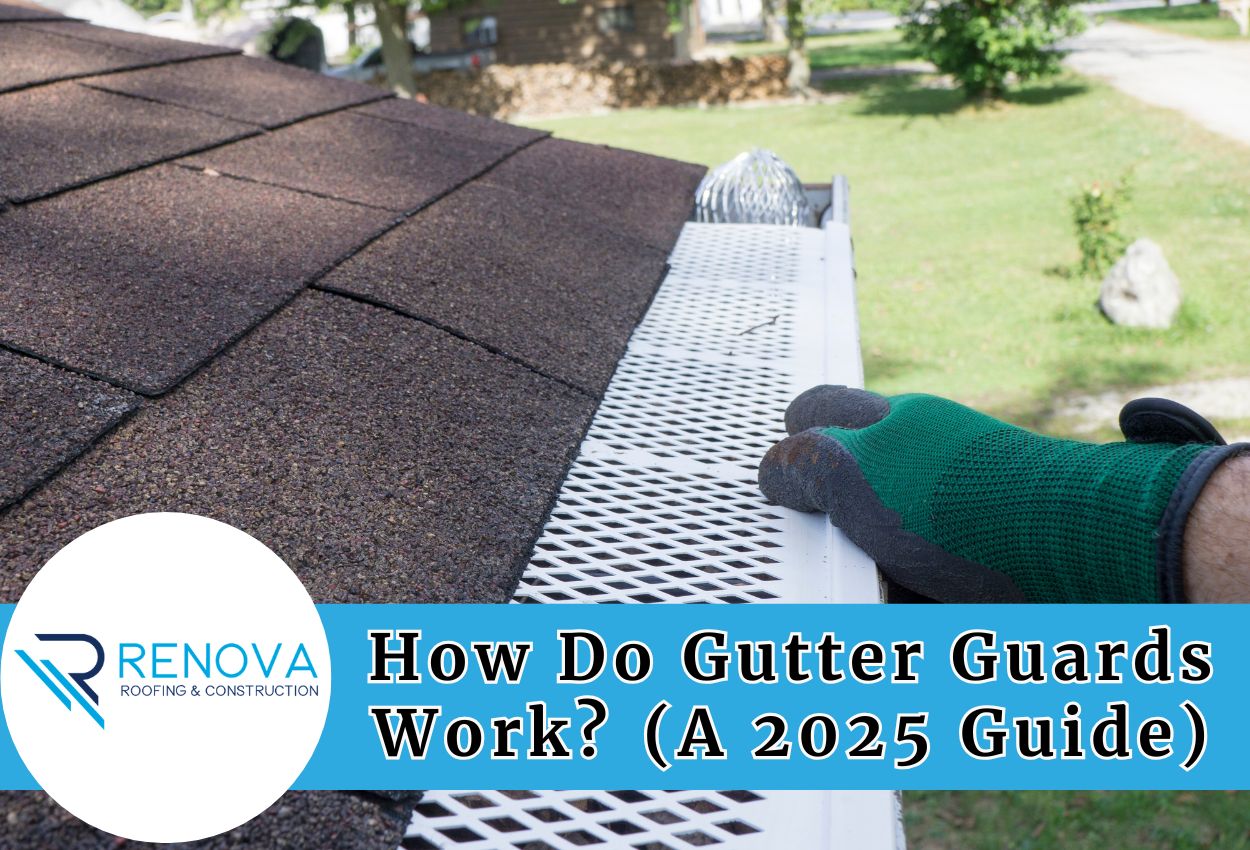Since gutters play such a large role in diverting rainwater away from your home and preventing water damage, it’s a given that you would want to keep them clear of clogs and debris. To help you with this task, and reduce the amount of work you put in, gutter guards help by allowing water to flow through while keeping debris out.
Now that it’s 2025, gutter guards have become more advanced, offering homeowners better protection with less maintenance. Whether you have trees shedding leaves year-round or just want a simpler solution, modern gutter guards provide an efficient option for any home.
If you want to learn how gutter guards work, keep reading this blog post to help you make the right gutter-related decisions in 2025.
What Are Gutter Guards?
Sometimes known as gutter covers or gutter screens, gutter guards are protective coverings that are positioned over gutters to let rainfall pass through while keeping out leaves, twigs, and pests. They help prevent clogs, reducing the need for frequent cleaning and maintenance.
They are also available in materials like mesh, aluminum, and foam, they protect homes from water damage by preventing issues like foundation erosion, basement flooding, and exterior damage. Gutter guards also keep pests from nesting and help prevent mold and mildew, making them an important feature for maintaining a home’s durability.
Also Read: Why Gutter And Downspouts Are Important For Your House (2025)?
Different Types Of Gutter Guards And How They Work
All gutter guards have the same job of keeping your gutters clean and helping water flow through smoothly, but it’s still important to know the different types and how they function. To help you get a better understanding, here are different types of gutter guards and how they work:
#1. Mesh Gutter Guards/Micro-Mesh Gutter Guards
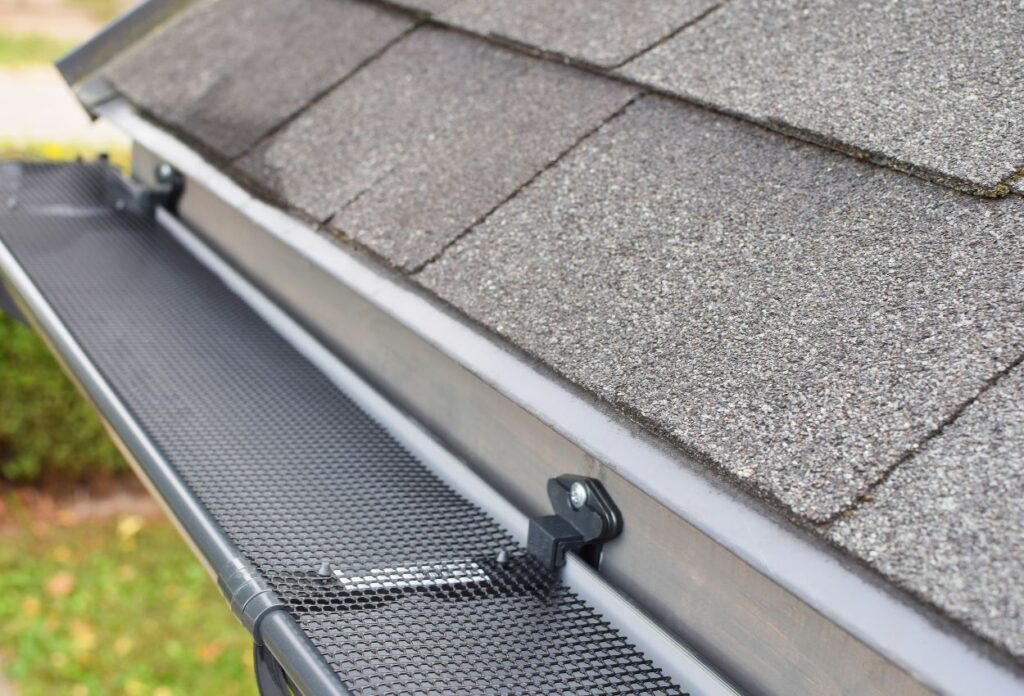
Designed to filter out debris while letting water pass through, mesh and micro-mesh gutter covers are an effective way to keep gutters clear. Mesh guards have small perforations that block leaves and larger debris, while micro-mesh guards feature finer holes that stop even small particles like pine needles and shingle grit. These guards are durable, require little maintenance, and provide reliable protection, making them one of the best gutter guards available.
#2. Brush Gutter Guards
Featuring a cylindrical brush design, these gutter guards sit inside the gutter and trap debris while allowing water to flow past. Made with a steel wire core and black polypropylene bristles, they are affordable, easy to install, and can be cut to fit different gutter sizes. However, smaller debris can get stuck in the bristles, so they may require more frequent cleaning sessions.
#3. Reverse Curve/Surface Tension Gutter Guards
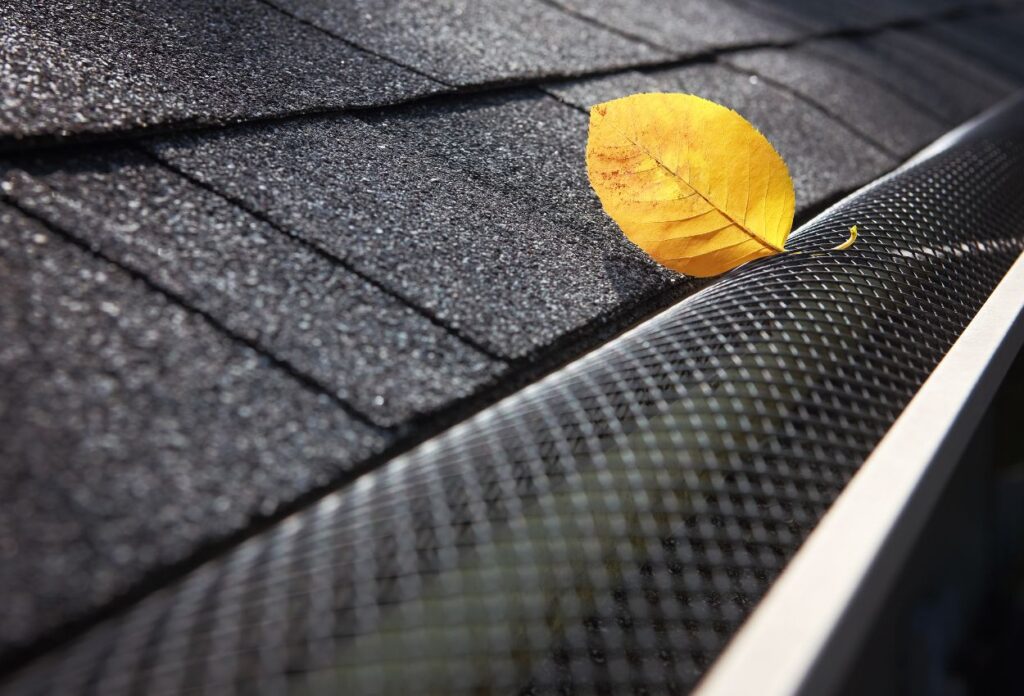
Utilizing a curved design, these guards guide water into the gutter while pushing debris over the edge. They are highly effective at preventing clogs but tend to be more expensive and require professional installation. While great for most conditions, they may struggle in areas with heavy rainfall, as water can easily overflow the gutters that are utilizing these guards.
#4. Screen Gutter Guards
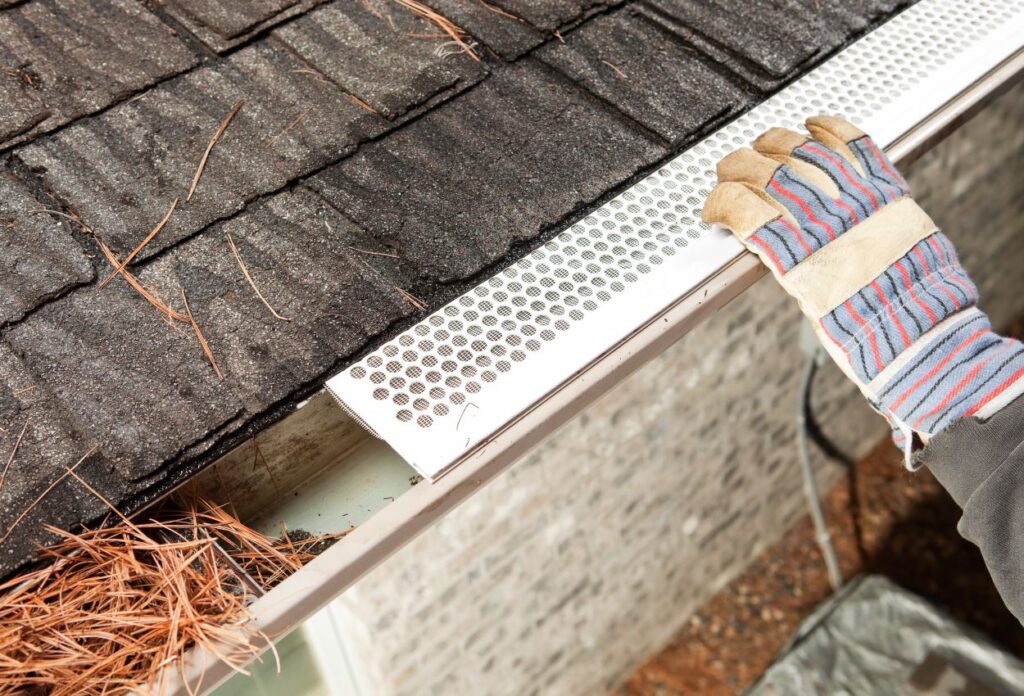
Providing a simple and budget-friendly solution, screen gutter covers consist of a perforated screen placed over the gutter opening. They block larger debris like leaves and twigs while allowing water to pass through. These guards are easy to install and a great DIY option. However, they require annual cleaning to maintain proper water flow and prevent buildup in gutters with gutter guards.
#5. Plastic Gutter Guards
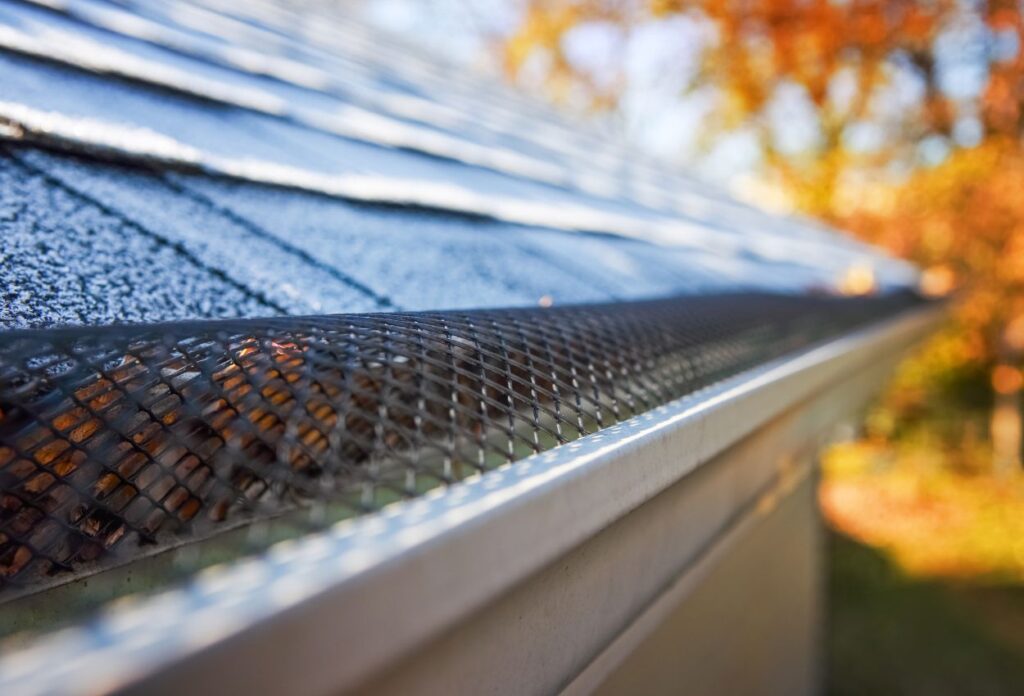
Offering a lightweight alternative, plastic gutter rain guards work similarly to screen guards but are made entirely of plastic. They have perforations to let water in while keeping debris out. These guards are affordable and easy to install, making them ideal for DIY projects. However, they are less durable than metal options and may become brittle in extreme temperatures, limiting their effectiveness in the best gutter systems.
#6. Foam Gutter Guards
Fitting directly inside the gutter, foam guards allow water to pass through their porous material while blocking debris. They are inexpensive, easy to install, and a good short-term solution for homeowners on a budget. However, they are not suitable for freezing temperatures, require frequent cleaning, and tend to wear out faster than other options, making them less ideal for the best gutter guards.
Are Gutter Guards Worth It?
Are you still confused about whether to invest in gutter guards or not? To give you a better idea, here are some pros and cons of gutter guards so you can make the right decision:
Pros of Gutter Guards
Less Maintenance Risk:
Reduces the need for frequent cleaning, minimizing the risk of ladder-related accidents.
Better Curb Appeal:
Many designs blend seamlessly with the home’s exterior, creating a more polished look.
Eco-Friendly:
Helps prevent gutter overflow, reducing the risk of environmental damage.
Quieter Rainfall:
Blocks debris that would otherwise make the sound of rainfall louder, making storms less disruptive.
Fire Protection:
Keeps dry leaves and other flammable materials out of gutters, lowering fire risks in dry areas.
Boosts Home Value:
Seen as a valuable upgrade that enhances property appeal.
Works with Many Roofs:
Compatible with various roofing materials, including metal, asphalt, and tile.
Cons of Gutter Guards
Slower Water Flow:
Gutter guards don’t completely stop clogs, and may still lead to buildup and cause drainage issues.
Appearance Concerns:
Some designs may not match the home’s style, affecting its overall look.
High Upfront Cost:
Installation can be expensive compared to standard gutter systems.
Debris Can Pile Up:
Leaves and dirt may collect on top, requiring occasional cleaning.
Installation Challenges:
Some types need special tools or professional installation for proper fitting.
How To Choose the Right Gutter Guards in 2025
Here are some points to keep in mind when thinking about getting gutter guards for your home:
1. Material & Durability
The right material ensures long-lasting performance. Gutters with gutter guards made of aluminum are lightweight and rust-resistant. Stainless steel is highly durable, while plastic is budget-friendly but less sturdy.
2. Climate & Debris Type
Climate and debris type affect performance. Gutter guards like micro-mesh work well in heavy rain, while they also block small debris like pine needles. In snowy areas, reverse curve guards may cause snow buildup.
3. Budget & Cost
Upfront costs vary, but long-term savings matter. Higher-end options like micro-mesh require less maintenance, making them cost-effective. Investing in the best gutter systems can reduce future maintenance costs.
4. Gutter Compatibility
Not all gutter guards fit every system. They should match the style of your gutters, like K-style or half-round, and choosing the right fit prevents leaks and ensures smooth water drainage.
5. Appearances
Some gutter guards are more visible than others. Reverse curve models stand out, while lower-profile designs blend with the roofline. Choosing the best gutter guards can protect your home while maintaining curb appeal.
Shield Your Home from Water Damage with Renova Roofing & Construction!
Now you know that gutter guards are a great way to keep your gutters clear, prevent water damage, and cut down on maintenance. With various options available, you can choose the best fit based on your budget, climate, and upkeep needs. Consulting a professional ensures you get the right solution, saving you time, money, and stress in the long run.
With Renova Roofing & Construction’s expert gutter services, you can keep your home safe from water damage. No more clogs, overflows, or expensive repairs! We offer durable gutter guard installation to reduce maintenance needs and gutter replacements. Trust our skilled team to deliver a reliable solution tailored to your home. Contact us today at (601) 647-3433!

